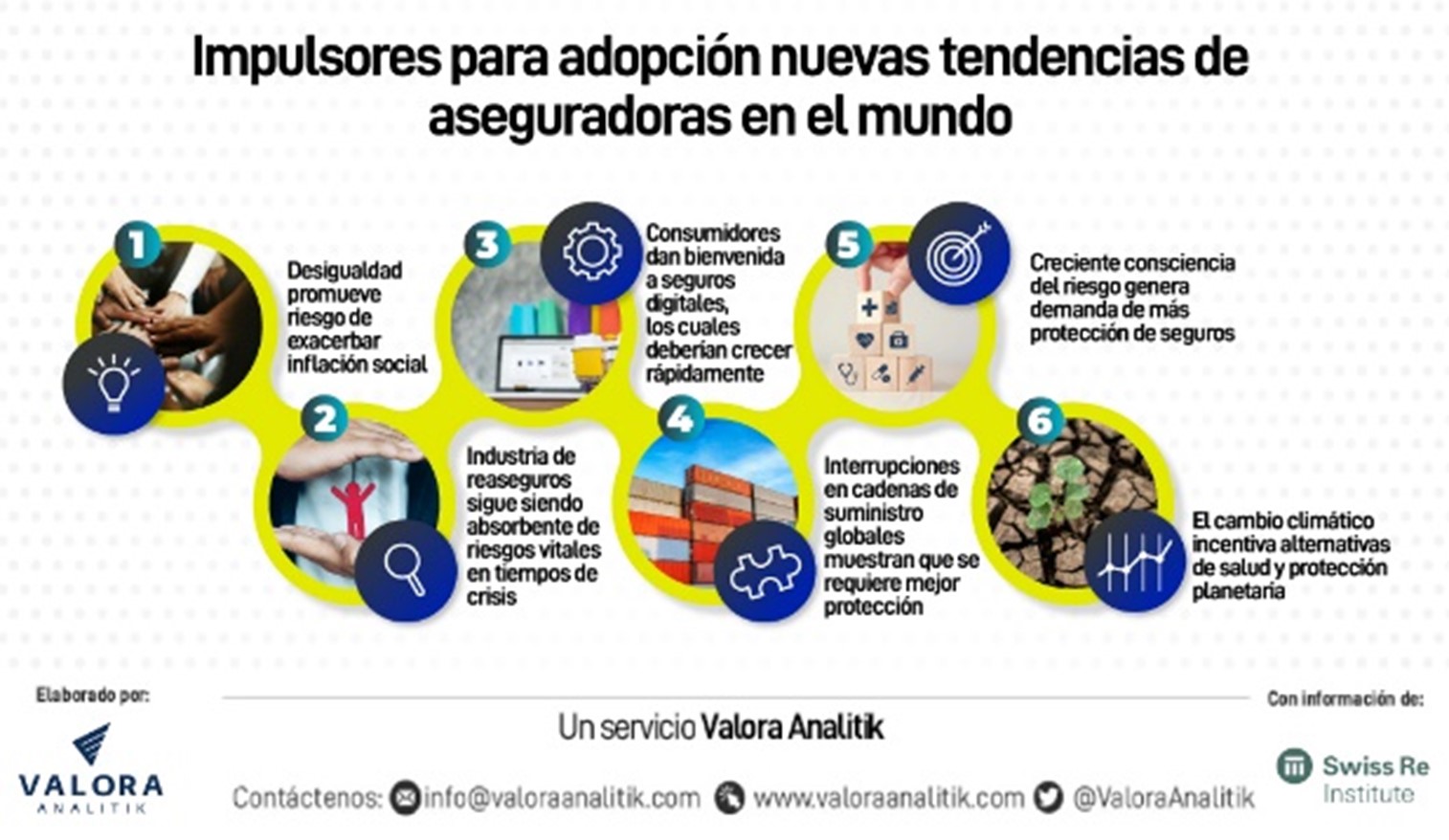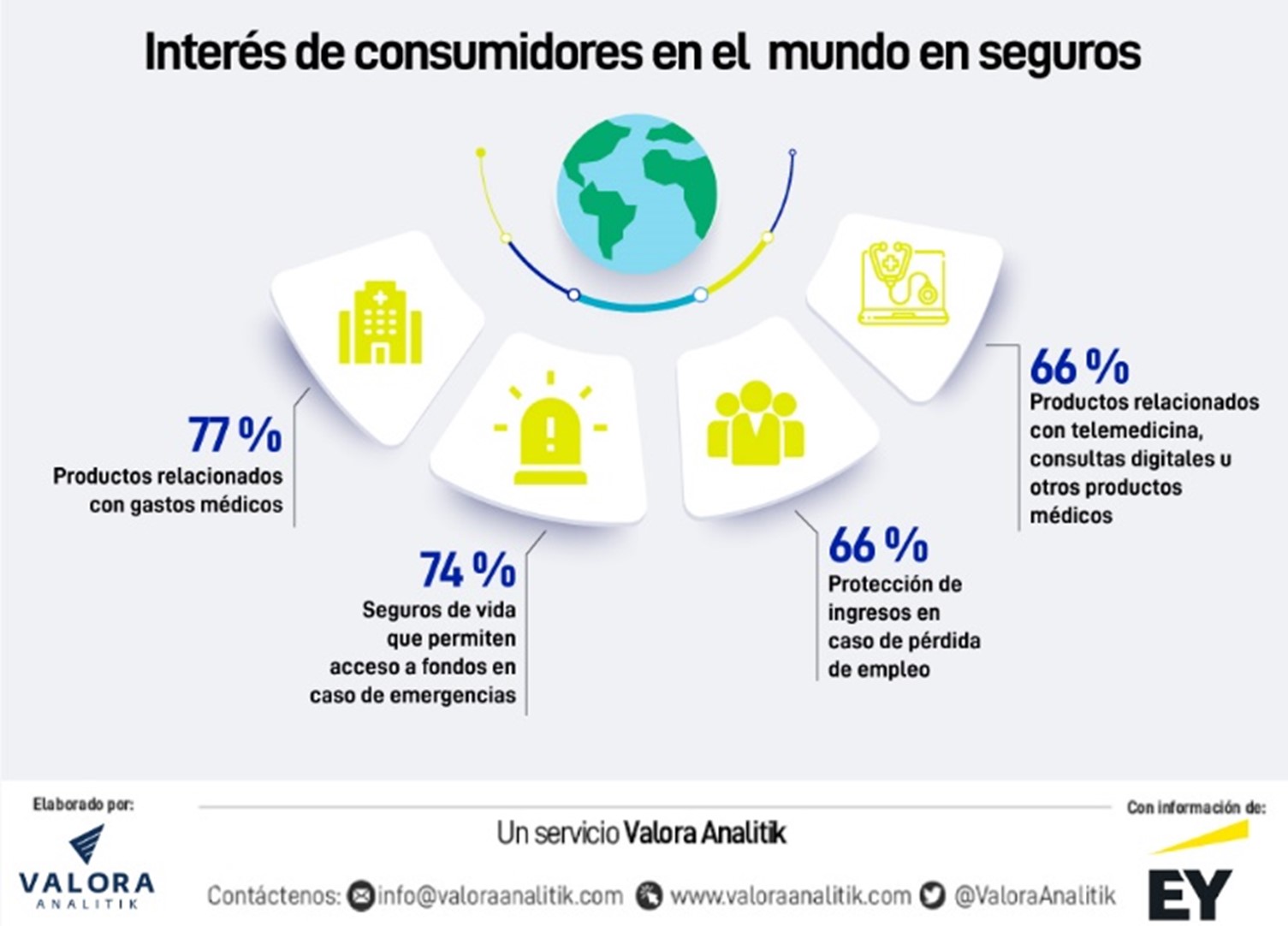The progress made on different fronts, following the impact of Covid-19, is consolidating the industry´s growth while diversifying its portfolio of different alternatives.
By Valora Analitik for Grupo SURA*
With the Covid-19 pandemic, all industries had to respond to the great challenges posed by digitalization and build more effective communication channels with both their consumers and other audiences. In the specific case of the insurance industry, this has had to adapt to new conditions in terms of risk planning as well as extending the amount of options offered in order to cater to the new demand on the part of both private individuals and companies alike.
Rating agencies such as Fitch Ratings or S&P Global Ratings have pointed out in their 2022 Outlook reports for the Latin American insurance sector that, in fact, one of the main trends that shall continue to consolidate itself within the market has to do with digital transformation, which is a key factor in the ratings issued for financial institutions in the medium and long term, which only goes to underscore its importance, given the risks that, due to the nature of the insurance business and the current political and economic situations, are constantly experienced throughout the region.
With regard to this, Senior Director of Insurance for Latin America at Fitch Ratings, explained that the growth of the region's total written premium portfolio in dollars in 2021 allowed the markets to maintain relatively stable efficiency ratios, driven in large part by digital transformation.
All this, amid new consumer expectations, the recovery of our business sectors and higher levels of mergers and acquisitions, which have led agencies such as S&P or Fitch Ratings to foresee a decade of changes, new business models and a rapid digital acceleration of the insurance market.

Changes that are here to stay
Juan Pablo Loureiro, Head of Access, Alliances and Solutions Development at Suramericana, agrees that, although the industry had already implemented some changes prior to the pandemic, in the interim it has accelerated its processes on different fronts.
In this regard, Loureiro highlighted four specific points that have had a positive impact on insurance companies, namely new working models and a new interpretation of human talent; digital transformation and distribution so as to adapt to the needs of business partners; a greater awareness of the post-pandemic risk for people and finally, thanks to greater digitization, we have new advances in connectivity and a greater knowledge of cyber risks.
"This has highlighted a greater consumer awareness, as it has increased levels of digital adoption and this is a challenge that, in the case of Suramericana, we have been implementing on both our direct channel, as well as in hybrid models, with investments close to USD 80 million in all nine of our subsidiaries throughout the region."
Proof of this, and linked to the current trends, are the services associated with telemedicine and digital health care, which have made it possible to reach specific segments as well as intermediate and rural towns that previously did not have access to these options. Likewise, social and planetary health is a trend that brings about growth opportunities, especially if this kind of initiative is articulated with governments and regulators.
"Insurance plays a fundamental role in a helping people and their families to take a step forward with their wellbeing , and for companies it is a support for increasing their competitiveness," added Loureiro.
More trends and new players
According to projections issued by the Swiss Re Institute and consulting firms such as EY, the insurance sector is on track for continued growth this on the back of a strong momentum that the global markets are experiencing due to increased demand for risk protection.
"Climate change, digitalization and divergence in the face of socioeconomic factors are significant trends, which are shaping the global economy and insurance markets," Swiss Re noted in the latest Sigma study, which forecasts that the global insurance industry shall reach a new all-time high in global premiums by mid-2022, surpassing USD 7.000 million.

Another study by Mapfre Economics agrees that, after the blow dealt by Covid-19, there has been a recovery in the sales of life insurance together with new digital proposals being offered for this segment, which accelerated in 2021 and is set to continue at a good pace both this year and in 2023.
The Japanese firm NTT Data in its sixth edition of the Insurtech Global Outlook 2022 provides another view on the new trends and players coming to the fore in this sector. This study analyzes the main trends in the insurance and insurtech ecosystem as well as the impact that advanced technologies and new business models are having.
Thus, it shows how 72% of insurers are shifting their business models more towards the digital distribution of products and services of other companies, with the aim of providing the best possible customer experience. However, 99% of executives in the life insurance segment believe in the need for a transformational digital change in order to maintain and further grow the industry in the future.
In fact, global investments in insurtechs reached USD 10,100 million in 2021. This represents an increase of 38% compared to 2020, marking a new record high and a clear consolidation of the market in the face of these new players. In addition, insurtechs have received 50% of their all-time funding in just the last two years alone.
The growth in investment is also a reflection of how committed insurance companies are to the insurtech environment, as the amount of investments made has grown exponentially.
Alejandro Morán, Partner and Head of Insurance Americas at NTT Data, stressed that "insurtechs are a fundamental part of the evolution of the insurance ecosystem, so it is important to understand the main future trends and evaluate the impact of technologies such as big data, artificial intelligence and the internet of things on new and traditional players".
Regarding this trend, Loureiro added that the insurance industry is looking to move away from the more traditional way of doing things in order to become more relevant. "Hybrid models are key to expanding frontiers, comprehensive value propositions for different productive sectors, and we must understand the daily life of companies and encourage and assist with their growth at different stages."
Challenges for the Industry
Although great progress has been made and the path forward in the mid-term looks promising, there is still work to be done. According to the firm Willis Towers Watson, 56% of companies belonging to the insurance sector are still in the process of planning and developing new technology capabilities, 42% of insurers have created partial or total business platforms and 38% are just incorporating internet of things, blockchain, artificial intelligence, robotics, big data and analytics for their clients.
Carlos Londoño, Head of Logistics and Transportation for AON Colombia, noted that the demand for solutions for mitigating cyber, credit and commercial risks is increasing. "What companies began to look for was a way to shield their entire production chain and in this way produce the least amount of losses, should any of these risks arise with their logistics," he stated.
In short, with the growing interest of both private individuals and companies in obtaining insurance coverage and solutions that are more tailored or customized to their own specific interests in various areas, especially with regard to health and financial wellness, they are showing how the market can leverage all these major catalysts in order to create more innovative ecosystems and products both this year and in the years to come.
*This article was prepared by the Valora Analitik staff for Grupo SURA. Its content is of a purely journalistic nature and does not compromise any specific positions taken or recommendations made by our Organization.










